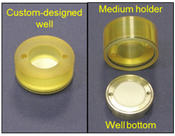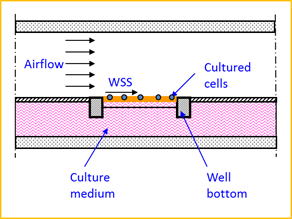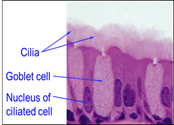Air-liquid interface culture of nasal epithelial cells for in vitro studies
The nasal passages are the communicating chambers between the respiratory tract and the environment, and thus, they are the front line defenders of the respiratory system. Inspired air is heated and wetted while transported through the nasal cavity. Nasal defence relies on the process of mucociliary clearance, in which the secreted mucus layer lying on the airway surface traps inhaled particles and absorbs soluble gases and is constantly driven towards the nasopharynx and removed from the body through the digestive system or expectoration.
The nasal epithelial cells (NECs) secret mucins, water and other materials to form the mucus layer which is the communicating entity with the inspired and expired air for removing forien particles and the exchange of heat and water vapor. Accordingly, the NECs are exposed to different fields of mechano-physical stresses, such as wall shear stress (WSS), temperature and humidity, which are expected to affect their function. Human NECs were cultured under air-liquid interface (ALI) conditions, which mimic nasal in vivo conditions. The cells were cultured on either synthetic or amniotic membranes in custom-designed wells that allow installation of the viable cells in a flow chamber for application of planar airflows on the cell surface. The cells were subjected to various steady and oscillatory fields of airflow induced WSS at different temperature and humidity levels. Changes in mucin secretion and the cytoskeleton structure were studied in response to the stimulations.
 |  |  |
 |

